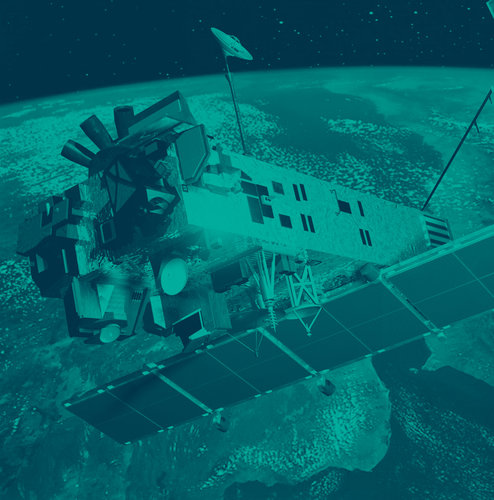Overview
Data from spacecraft can provide medical as well as environmental intelligence: satellites are beginning to come to the aid of authorities working to prevent the spread of epidemics. The incidence of diseases such as malaria is influenced by local climate variation.
Satellite data has the potential to help forecast disease outbreaks. For example, increased rainfall and temperature levels lead to upsurges in malaria cases as mosquito numbers rise in response.
As part of a project called Epidemio, ESA provided products to the World Health Organisation (WHO) leading a global partnership called Roll Back Malaria, aimed at halving malaria cases by 2010, distributing countermeasures such as bednets.
They included satellite-derived maps of water bodies as well as digital elevation models and weekly land surface temperature maps. Water mapping is especially useful for malaria risk mapping as mosquitoes begin life as aquatic larvae and adults rarely travel more than two kilometres from their breeding site in their two to three week lifetime.
This is very important in areas prone to malaria epidemics, where local environmental factors are key influences on the character of outbreaks. In the Sahel region of Africa, for instance, climate and temporary water bodies play a large role in determining the pattern of the malaria season.
In Niger, ESA assisted the locally-based Centre de Recherche Médicale et Sanitaire (CERMES) in this area with the objective of better quantifying the links between environment and malaria transmission by area.
Combining this data with climate forecasting makes it possible to determine areas of greatest risk of malaria epidemics and take action accordingly.
ESA also assisted the Gabon-based International Centre for Medical Research (CIRMF) in their search for the unknown animal or plant carrier of the deadly Ebola haemorrhagic fever. Detailed vegetation maps of Congo and Gabon were created with satellite images to help co-ordinate field surveys and look for patterns in the environmental characteristics associated with areas where infected animals are found.
In the African Sahel, satellites tracked massive desert dust storms blowing across the region, in order help Niger-based medical researchers studying lethal meningitis epidemics that follow in the dust’s wake.
The lethal disease is common in the Sahel 'meningitis belt' and irritation to local inhabitants' mucus membranes by dust, coupled with seasonal dryness, may make them more vulnerable to infection from meningitis-causing bacteria.















 Germany
Germany
 Austria
Austria
 Belgium
Belgium
 Denmark
Denmark
 Spain
Spain
 Estonia
Estonia
 Finland
Finland
 France
France
 Greece
Greece
 Hungary
Hungary
 Ireland
Ireland
 Italy
Italy
 Luxembourg
Luxembourg
 Norway
Norway
 The Netherlands
The Netherlands
 Poland
Poland
 Portugal
Portugal
 Czechia
Czechia
 Romania
Romania
 United Kingdom
United Kingdom
 Slovenia
Slovenia
 Sweden
Sweden
 Switzerland
Switzerland






























